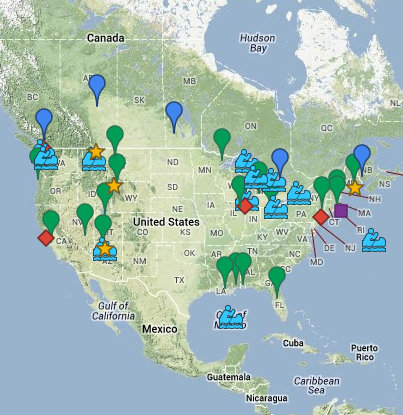Tuesday, March 22, 2016
Ala Spit
A major windstorm coincided with high tide early on the morning of March 10th. The Seattle tide gauge pushed 14.3', a little less than 2' above the predicted 12.4'. In some places, the impacts were reported greater than the storm on February 4th, 2006 (ten years ago). In others, the effects were less. The differences may have been due to the relative role of high water versus waves, to local variability in wind intensity and orientation, and to small changes in beach conditions that can lead to big differences in how waves impact the landward area.
A week later, I was finally able to get to the beach - a quick series of stops on the way to an event in Langley. But it was enough to get some sense of the effects of the storm at a few places that I'm getting to know pretty well.
So here we are back at Ala Spit. The overtopped and eroded berm was rebuilt this fall (Ala Spit: November 2015) and this storm gave it a serious test. Pictures forwarded by others showed this portion of the spit pretty much submerged during the peak of the storm, but apparently not enough for the waves to wash the drift wood over the back into the lagoon - or at least not much of it.
AERIAL VIEW
But farther out the spit, beyond the area of the recent projects, the effects of the previous week's storm were much more evident. The spit had been overwashed, the logs largely floated off, much of the vegetation stripped or buried, and the previous berm spread out in a relatively uniform sheet of gravel back from the leading edge of the spit.
The gravelly overwash deposits contrast nicely with the sandier material farther inboard of the beach and also suggests some differences between the processes that shaped each. I suspect the gravel sheet is classic bedload transport by breaking waves, thus the abrupt landward edge and the fact that smaller overwash lobes were generally oriented northwesterly, perpendicular to the beachface. The ripples in the coarse sand suggest flowing water -- with currents flowing in a much more northerly direction (more parallel to the overall trend of the spit).
Overwash is typically accompanied by erosion of the upper beach face - it's where much of that gravel comes from. Here you can see how it stripped the the area of the previous berm right down to the underlying substrate (some organic, some anthropogenic, confirming a complex natural and human history).
The fact that the most significant overwash occurred here rather than at the rebuilt neck of the spit is interesting, but not necessarily surprising. The new berm had been built very high, probably higher than the natural berm in this area, and therefore was less prone to inundation (this in marked contrast to the circumstances five years ago during a lesser storm when an earlier attempt at a restored berm washed over into the lagoon (Ala Spit: December 2011). It's also possible that the orientation of the storm was a little different. But there's another possible twist, one that only really good morphological monitoring could confirm. This segment of beach may have been starved of sediment by the 2011-2012 washover events just updrift. In which case, this is exactly where you might expect the spit to be most vulnerable!
Labels:
puget sound,
restoration,
salish sea,
washington,
whidbey
Location:
Oak Harbor, WA, USA
Subscribe to:
Post Comments (Atom)






No comments:
Post a Comment